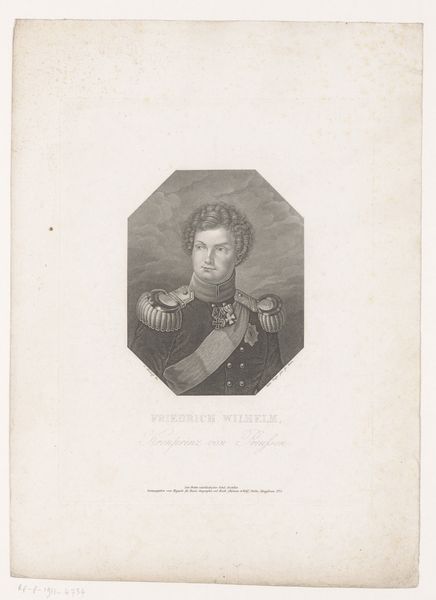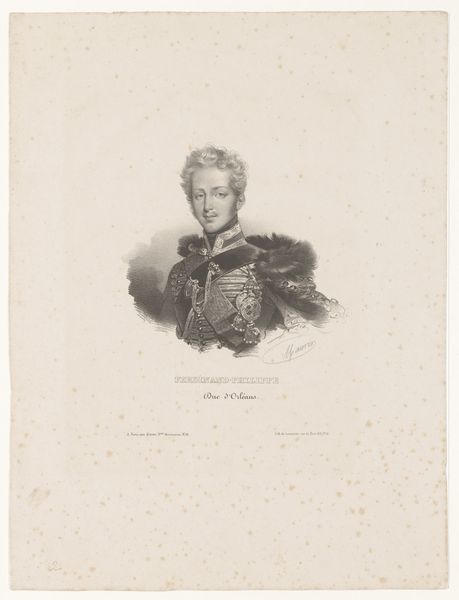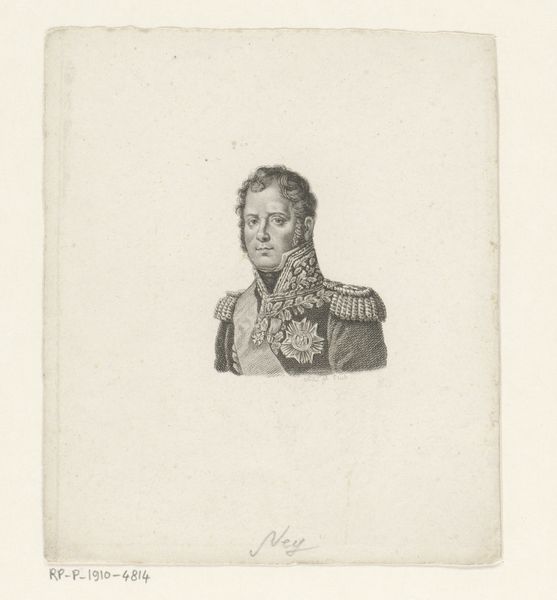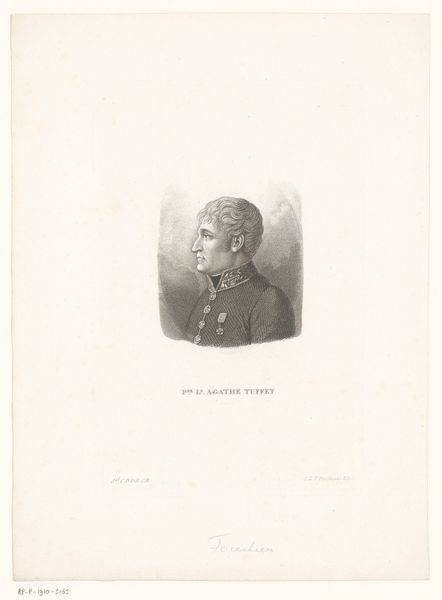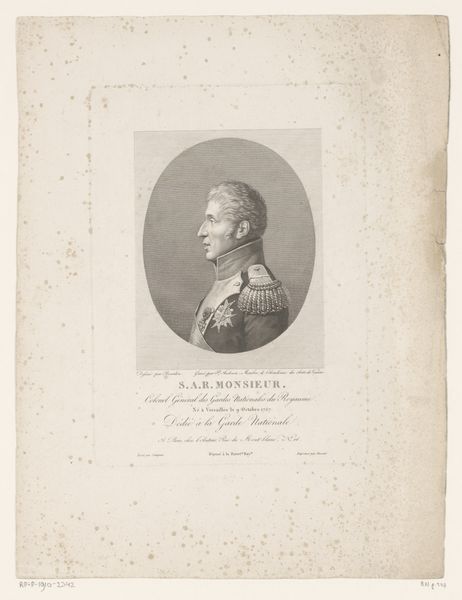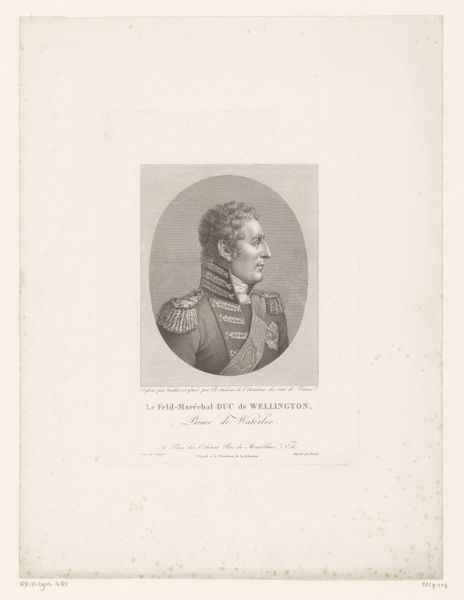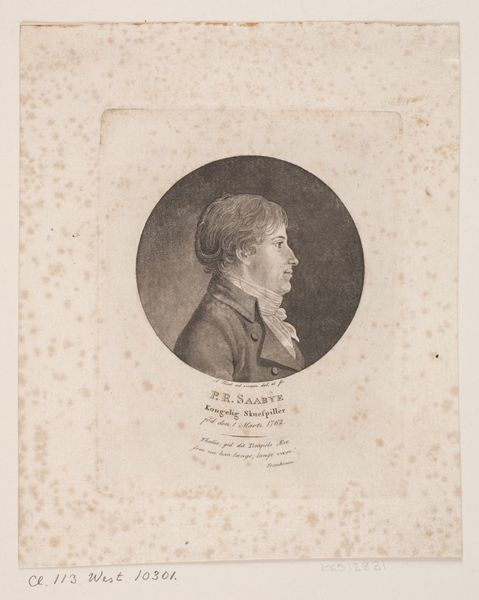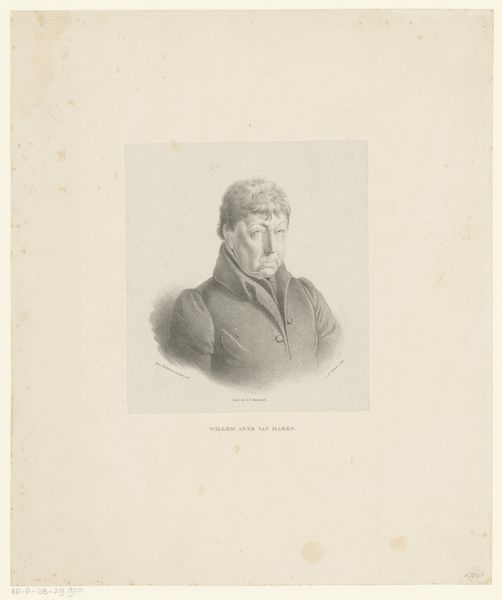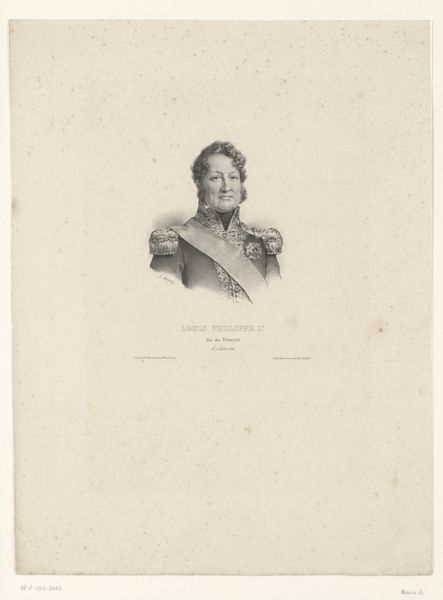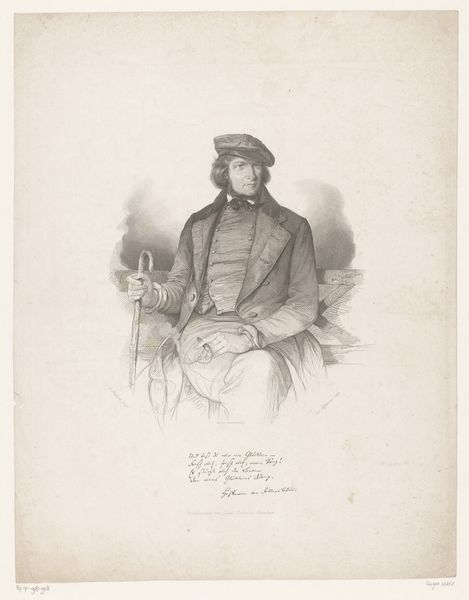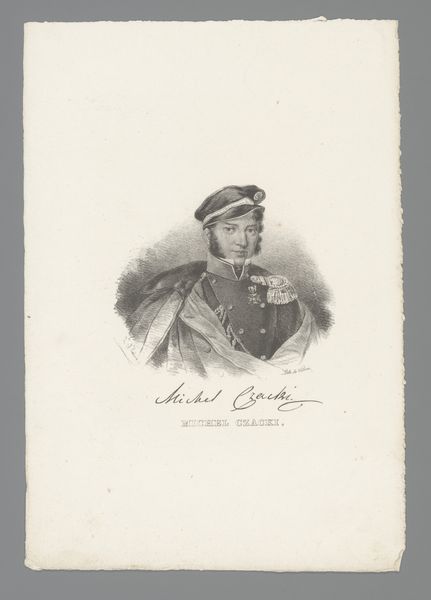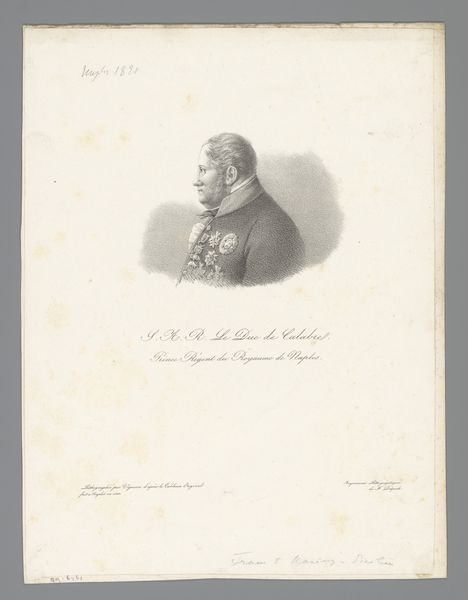
drawing, pencil, engraving
#
portrait
#
drawing
#
neoclacissism
#
pencil drawing
#
pencil
#
academic-art
#
engraving
Dimensions: height 290 mm, width 228 mm
Copyright: Rijks Museum: Open Domain
Editor: This is Francesco Vendramini's "Portrait of Alexander I, Tsar of Russia," created in 1813. It looks like a pencil drawing or engraving. There's a somber feel to it, despite the Neoclassical style and all the finery of his military uniform. What strikes you about this piece? Curator: What immediately grabs my attention is how this image, ostensibly a portrait celebrating power, can be read as a subtle commentary on the anxieties of leadership in a tumultuous period. Consider the historical context: 1813, the Napoleonic Wars are raging. Alexander I, while seemingly powerful, was navigating incredibly unstable political terrain. Editor: So you're saying the portrait captures more than just his physical likeness; it reflects the pressure he was under? Curator: Precisely. Notice the detail in the uniform, almost meticulously rendered, juxtaposed with the softer, less defined features of his face. It speaks to the performative aspect of power, the facade required of leaders, and perhaps, a vulnerability beneath the surface. This resonates even today when we consider the relationship between image, identity, and power. Do you see any other visual clues that might reinforce this reading? Editor: I guess the way the image fades towards the bottom, almost like he’s emerging or disappearing into the paper itself, hints at a transient nature of power, even for a Tsar. Curator: Exactly! And what does it say about our current moment that images of political figures continue to be so carefully constructed, so readily consumed, and so potentially deceptive? Editor: I never thought a simple portrait could be so layered. Thanks, I'll definitely look at other portraits differently now! Curator: It is in those layers where meaning truly lies, and the dialogue between then and now can truly begin.
Comments
No comments
Be the first to comment and join the conversation on the ultimate creative platform.
